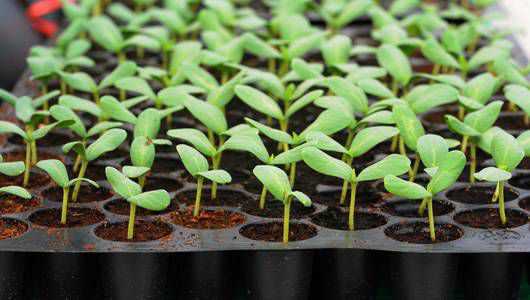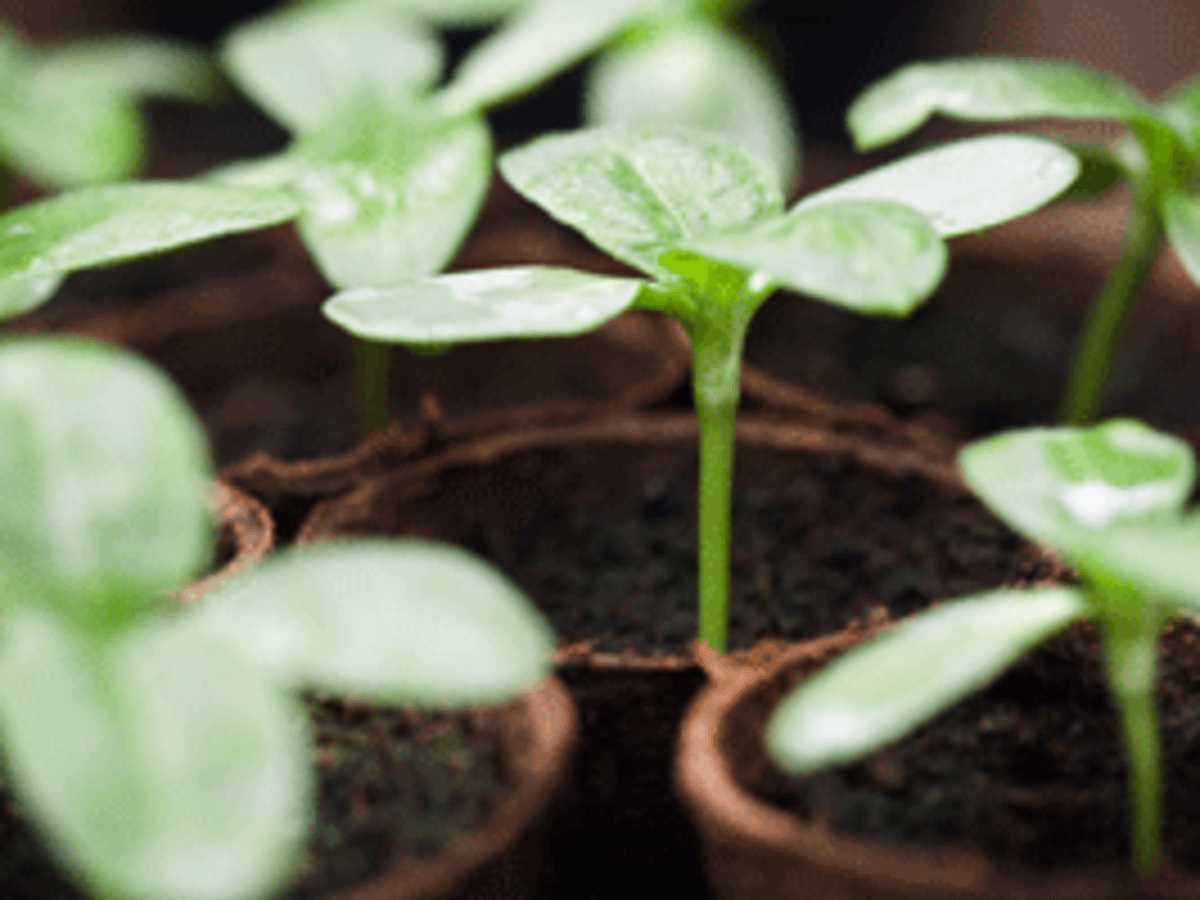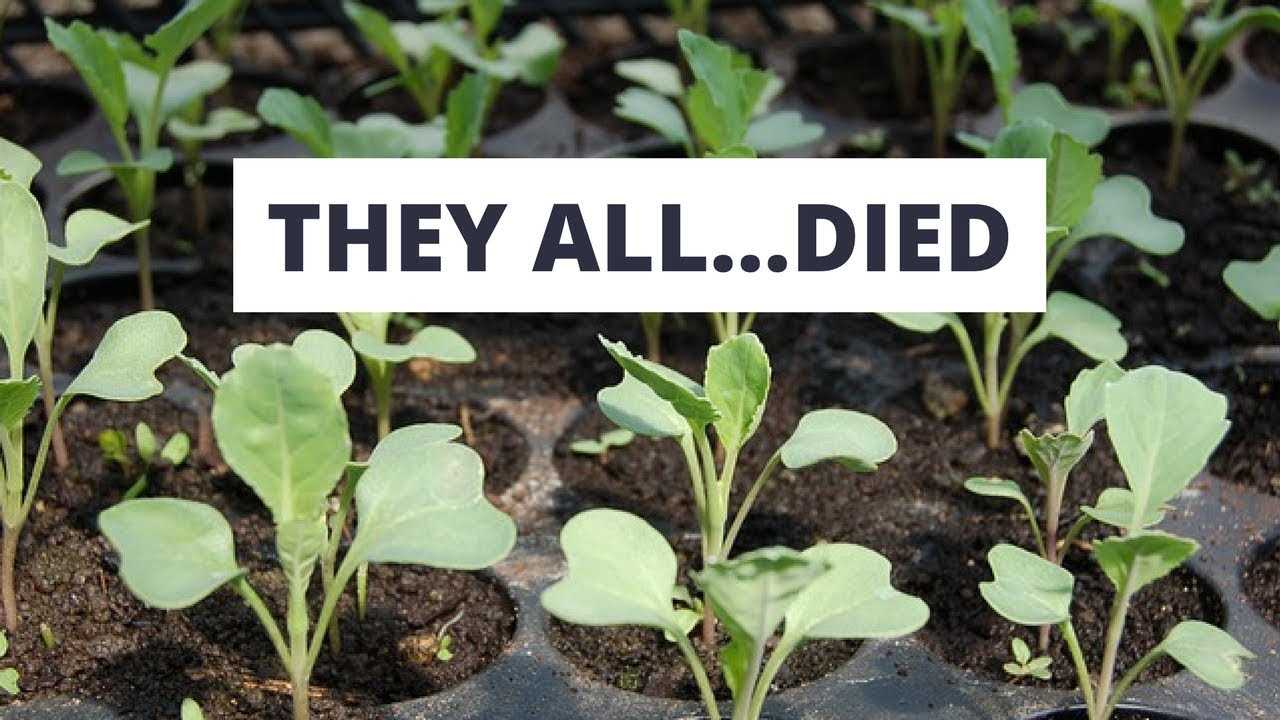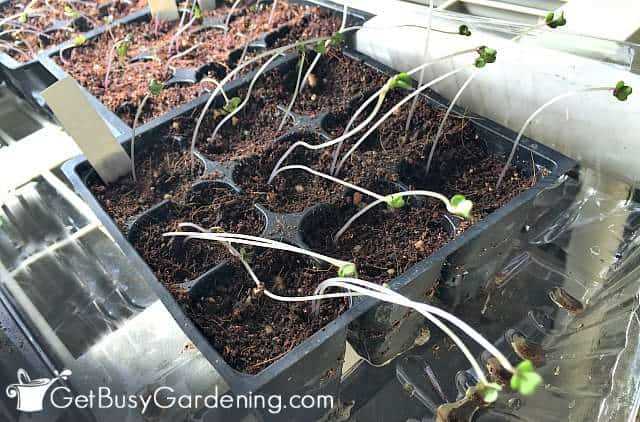- Lack of Proper Hardening
- Insufficient Nutrient Supply
- Overwatering
- Tips for preventing overwatering:
- Excessive Heat and Sunlight
- Lack of Shade
- Direct Sunlight Exposure
- Too Close to Heat Sources
- Insufficient Watering
- Temperature Fluctuations
- Inadequate Air Circulation
- Pest and Disease Infestation
- How to Prevent Seedlings from Getting Sick:
- 1. Start with healthy seeds:
- 2. Sterilize pots and trays:
- 3. Use quality soil mix:
- 4. Maintain proper watering practices:
- 5. Provide adequate air circulation:
- 6. Monitor and control pests:
- 7. Proper hardening off:
- 8. Avoid overcrowding:
- 9. Practice crop rotation:
- 10. Follow proper hygiene:
- Gradually Acclimate Seedlings to Outdoor Conditions
- Why is acclimation important?
- How to acclimate seedlings?
- Benefits of acclimating seedlings
- Provide Balanced Nutrient Mix and Adequate Fertilization
- Questions and Answers:
- Why do seedlings get sick after picking?
- How can I prevent seedlings from getting sick after picking?
- What is transplant shock and how does it affect seedlings?
- What are some signs of seedlings getting sick after picking?
- Can seedlings get sick due to improper handling?
- How important is maintaining a disease-free environment for seedlings?
- Videos: Are your seedlings dying ?? – Causes and Remedies
When it comes to gardening, starting seedlings indoors can be a rewarding and cost-effective way to grow your own plants. However, after the initial excitement of picking your seedlings, it can be disheartening to see them become sick and ultimately die. To prevent this from happening, it is important to understand the main reasons why seedlings get sick after picking and how to avoid them.
One of the main reasons why seedlings get sick is due to the lack of hardening-off. Hardening-off is the process of gradually acclimating seedlings to the outdoor conditions they will face. If you skip this step and directly transplant your seedlings outdoors, they may suffer from transplant shock, which can weaken their immune system and make them more susceptible to diseases.
Another common reason for seedling sickness is over or under watering. When seedlings are overwatered, their roots can become waterlogged, leading to root rot and fungal diseases. On the other hand, if seedlings are not watered enough, they can become dehydrated and wilt. Finding the right balance and watering your seedlings appropriately is crucial for their health.
Poor soil quality is also a major factor in seedling sickness. If the soil is not well-draining or lacks essential nutrients, seedlings may struggle to grow and develop properly. Adding organic matter, such as compost or aged manure, to the soil can improve its structure and provide the necessary nutrients for healthy seedling growth.
Inadequate sunlight or improper lighting is another reason why seedlings may become sick. Lack of sunlight can cause seedlings to become leggy and weak, making them more susceptible to disease. Investing in proper grow lights or placing seedlings in a sunny location can help promote healthy growth.
Seedling overcrowding is another common mistake that can lead to sickness. When seedlings are placed too close together, they compete for resources such as light, water, and nutrients. This can weaken their immune system and make them more prone to diseases. Giving seedlings enough space to grow and thrive is crucial for their overall health.
Lastly, using contaminated or poor-quality potting soil can also contribute to seedling sickness. Contaminated soil can introduce harmful pathogens and pests that can attack seedlings. Using sterile and high-quality potting mix can minimize the risk of disease and ensure the health of your seedlings.
In conclusion, by understanding and addressing the main reasons why seedlings get sick after picking, you can take the necessary steps to ensure their health and success. Proper hardening-off, appropriate watering, good soil quality, adequate sunlight, seedling spacing, and quality potting soil are all key factors in keeping your seedlings disease-free and thriving. With a little bit of knowledge and care, you can prevent seedling sickness and enjoy a bountiful garden.
Lack of Proper Hardening
One of the main reasons why seedlings get sick after picking is the lack of proper hardening. Hardening is the process of gradually exposing seedlings to the outdoor environment before transplanting them into the garden. This process helps the seedlings adjust and acclimatize to the new conditions, preventing shock and stress.
When seedlings are grown indoors in a controlled environment, they become accustomed to stable temperatures, humidity levels, and light conditions. However, the outdoor environment can be much different, with fluctuating temperatures, wind, and intense sunlight. If seedlings are not properly hardened, they may not be able to cope with these changes and may become stressed, leading to diseases and stunted growth.
Proper hardening should start about a week before transplanting. Gradually expose the seedlings to outdoor conditions by placing them outside for a few hours a day, gradually increasing the time each day. Start with a shady, protected area and gradually move them to a sunnier spot. This will help the seedlings adjust to the intensity of sunlight and prevent sunburn.
It’s also crucial to protect the seedlings from strong winds during the hardening process. Wind can cause damage to the delicate stems and leaves of the seedlings, leading to breakage and stress. Use windbreaks or create a sheltered area using fences, walls, or other tall structures to provide protection.
Watering is another important aspect of hardening. Seedlings need to be watered properly during the hardening process to prevent wilting and dehydration. However, avoid overwatering, as this can lead to root rot and other diseases. Water the seedlings thoroughly but allow the soil to dry out slightly between waterings. This will encourage the roots to grow deeper and become more resilient to water stress.
By properly hardening your seedlings, you can significantly reduce the risk of them getting sick after picking. It’s a crucial step in the transplanting process that should not be skipped or rushed. Take the time to gradually expose your seedlings to outdoor conditions, protect them from wind, and water them properly. Your seedlings will thank you by thriving in the garden and producing healthy, robust plants.
Insufficient Nutrient Supply
A common reason why seedlings may get sick after picking is due to insufficient nutrient supply. When seedlings are moved from their original seed trays or pots to a new environment, they can experience a shock and struggle to adapt to the new conditions. One of the key factors affecting their ability to adapt is the availability of nutrients.
Seedlings require a balanced supply of essential nutrients, such as nitrogen, phosphorus, and potassium, to support their growth and development. If the soil or growing medium used for transplanting lacks these essential nutrients, the seedlings may become weak and susceptible to diseases.
To ensure that seedlings receive adequate nutrition after being picked, it is important to prepare a nutrient-rich growing medium or soil. This can be achieved by adding organic matter, such as compost or well-rotted manure, which can provide a wide range of essential nutrients.
Additionally, it is beneficial to use a balanced slow-release fertilizer or organic fertilizers specifically formulated for seedlings. These fertilizers can provide a steady supply of nutrients over a extended period, ensuring that the seedlings receive adequate nourishment during the critical period after picking.
Regular monitoring of the seedlings’ nutrient needs is also important. Symptoms of nutrient deficiency, such as stunted growth, yellowing leaves, and poor vigor, should be promptly addressed by adjusting the fertilization program or providing targeted nutrient supplements.
By ensuring a sufficient nutrient supply, seedlings are more likely to thrive and resist disease after being picked. Taking proactive steps to provide adequate nutrition can significantly increase their chances of successful transplanting and healthy growth.
Overwatering
Overwatering is one of the main reasons why seedlings get sick after picking. It is important to find the right balance when watering seedlings, as both underwatering and overwatering can be detrimental to their health.
When seedlings are overwatered, the soil becomes too saturated, leading to poor oxygen circulation and root rot. This can weaken the seedlings and make them more susceptible to diseases and pests.
Overwatering can also cause the seedlings’ roots to become weak and shallow, making them less able to absorb nutrients from the soil. As a result, the seedlings may become stunted in growth and have a higher risk of dying.
To avoid overwatering, it is important to water seedlings carefully and only when necessary. Before watering, check the moisture level of the soil by sticking your finger about an inch into the soil. If it feels dry, it is time to water the seedlings. However, if the soil feels moist, it is best to wait until it dries out a bit before watering again.
Tips for preventing overwatering:

- Use well-draining soil mix that allows excess water to drain away.
- Water seedlings from the bottom by placing them in a tray of water and allowing them to soak up the water through the drainage holes in the pots.
- Provide good air circulation around the seedlings to help the soil dry out more quickly.
By avoiding overwatering and providing the right amount of moisture to your seedlings, you can help them stay healthy and prevent them from getting sick after picking.
Excessive Heat and Sunlight
Excessive heat and sunlight can be detrimental to seedlings and cause them to become sick or die. Seedlings are delicate and can easily become overheated or sunburned if exposed to intense heat and sunlight for prolonged periods. Several factors contribute to this problem:
Lack of Shade
Seedlings require some shade, especially during the hottest parts of the day, to protect them from excessive heat and sunlight. If seedlings are not provided with adequate shade, the intense heat and sunlight can quickly dry out the soil, leading to dehydration and stress. Providing some shade using shade cloths, plant covers, or even strategically positioning taller plants can help protect seedlings from the harmful effects of excessive heat and sunlight.
Direct Sunlight Exposure
While seedlings need sunlight for photosynthesis, direct exposure to intense sunlight can be harmful. The intense heat can scorch and burn the delicate leaves, causing irreversible damage. Gradually acclimating seedlings to direct sunlight can help them adjust and develop a tolerance to the increased intensity. Start by exposing seedlings to a few hours of morning or late afternoon sunlight and gradually increase the duration and intensity over the course of a week or two.
Too Close to Heat Sources

Placing seedlings too close to heat sources, such as radiators or heating vents, can also lead to excessive heat and sunlight exposure. The direct heat from these sources can raise the temperature around the seedlings and cause them to wilt or dry out. It is important to keep seedlings at a safe distance from any heat sources to prevent overheating and damage.
Insufficient Watering
Proper watering is crucial for seedling health, especially in hot weather. When exposed to excessive heat and sunlight, seedlings can lose moisture quickly, increasing the risk of dehydration. It is important to water seedlings thoroughly and regularly to ensure the soil stays moist. However, overwatering can also be detrimental, so it is important to find the right balance.
Temperature Fluctuations
Extreme temperature fluctuations, such as rapidly changing from hot to cold or vice versa, can stress seedlings and make them more susceptible to diseases and pests. It is important to provide seedlings with a stable and consistent temperature environment. Avoid placing them near drafty windows or doors and try to maintain a moderate temperature range to promote healthy growth.
By addressing these factors and providing the appropriate care, seedlings can be protected from the harmful effects of excessive heat and sunlight, ensuring their healthy growth and development.
Inadequate Air Circulation
One of the main reasons why seedlings may get sick after picking is inadequate air circulation. When seedlings are placed in a closed and humid environment, it creates the perfect conditions for the growth of pathogens and disease-causing organisms.
Without proper air circulation, the humidity levels around the seedlings can rise, leading to the development of fungal diseases such as damping off. Diseases like damping off can cause the seedlings to rot at the base, making them weak and prone to death.
To prevent inadequate air circulation, it is important to provide proper ventilation for the seedlings. Here are some tips:
- Place the seedlings in an area with good air flow, such as near an open window or a fan.
- Avoid overcrowding the seedlings. Make sure there is enough space between each seedling to allow for proper air circulation.
- Avoid covering the seedlings with plastic or other materials that can restrict air flow.
Additionally, it is important to monitor the humidity levels in the environment. Keep the humidity levels between 40-60% to prevent the growth of pathogens.
By providing adequate air circulation for your seedlings, you can help prevent the risk of diseases and ensure their healthy development.
Pest and Disease Infestation
Pest and disease infestation can greatly affect the health and growth of seedlings. These issues can arise from various sources, including pests, pathogens, environmental factors, and poor cultivation practices. Here are some of the common pests and diseases that can infest seedlings:
- Aphids: These small insects feed on the sap of seedlings, causing stunted growth and distorted leaves. They can also transmit viral diseases.
- Spider mites: These tiny arachnids suck the sap from the leaves, leading to yellowing, wilting, and small brown spots on the foliage.
- Whiteflies: These pests cause damage by sucking sap and transmitting viruses. The affected seedlings may exhibit yellowing leaves and stunted growth.
- Root rot: Often caused by overwatering or poorly drained soil, root rot leads to the decay of the roots. Infected seedlings may show wilting, yellowing leaves, and stunted growth.
- Damping-off: This fungal disease affects seedlings in poorly ventilated and excessively moist conditions. It causes the seedlings to collapse and rot at the base.
- Leaf spots: Fungal pathogens can cause dark spots on the leaves, leading to leaf drop and reduced growth.
- Powdery mildew: This fungal disease forms a white powdery coating on the leaves, inhibiting photosynthesis and reducing the plant’s vigor.
To prevent pest and disease infestation, it is important to practice good sanitation, such as removing dead plant material and cleaning gardening tools. Implementing proper watering and drainage practices can also help prevent the development of root diseases. In addition, using organic pest control methods and regularly inspecting the seedlings for signs of infestation can help identify and address issues early on.
By taking proactive measures, seedlings can be protected from pests and diseases, ensuring their healthy growth and development.
How to Prevent Seedlings from Getting Sick:
1. Start with healthy seeds:
Ensure that you begin with high-quality seeds from reputable sources. Check for any signs of disease or damage before planting.
2. Sterilize pots and trays:
Before planting, make sure to clean and sterilize your pots, trays, and tools to prevent the spread of any potential pathogens.
3. Use quality soil mix:
Choose a well-draining and nutrient-rich soil mix specifically designed for seedlings. Avoid using soil from your garden, as it may contain harmful bacteria or fungi.
4. Maintain proper watering practices:
Avoid overwatering your seedlings as it can lead to root rot and other fungal diseases. Water them when the top inch of soil feels dry, and always water at the base of the plant to prevent foliage diseases.
5. Provide adequate air circulation:
Ensure that your seedlings have enough space between them to allow for proper air circulation. This helps prevent the buildup of moisture and reduces the risk of fungal diseases.
6. Monitor and control pests:
Keep a close eye on your seedlings for any signs of pests and take appropriate action to control them. Inspect your plants regularly and remove any pests or diseased leaves.
7. Proper hardening off:

Gradually acclimate your seedlings to outdoor conditions before transplanting them into the garden. This process, known as hardening off, helps them adjust to changes in temperature and sunlight, reducing the risk of shock and disease.
8. Avoid overcrowding:
Ensure that you give your seedlings enough space to grow without overcrowding them. Overcrowding can lead to poor air circulation, increased humidity, and the spread of diseases.
9. Practice crop rotation:
Rotate your crops each year to reduce the buildup of diseases in the soil. Avoid planting the same types of plants in the same spot year after year.
10. Follow proper hygiene:
Wash your hands thoroughly before handling seedlings or working in the garden to prevent the spread of diseases. Also, clean and sanitize your gardening tools regularly.
By following these preventive measures, you can significantly reduce the risk of seedlings getting sick and ensure a healthy start to your garden.
Gradually Acclimate Seedlings to Outdoor Conditions
After nurturing your seedlings indoors, it’s essential to gradually expose them to outdoor conditions. Sudden exposure to intense sunlight, temperature fluctuations, strong winds, and pests can shock and stress the tender plants. By acclimating your seedlings, you give them a better chance of surviving and thriving in their new environment.
Why is acclimation important?

Acclimating seedlings to outdoor conditions helps them adjust slowly to new factors they haven’t encountered indoors. This process strengthens their stems, develops their root systems, and improves their overall resilience.
How to acclimate seedlings?
Follow these steps to acclimate your seedlings:
- Start the acclimation process about one to two weeks before planting them outdoors.
- Choose a mild or overcast day to begin the acclimation process.
- Set your seedlings outside for a few hours in a sheltered area away from direct sunlight and strong winds. Increase the time gradually each day.
- Monitor your seedlings closely during the acclimation process. Look for signs of stress, such as wilting or yellowing leaves. If necessary, move them back indoors temporarily.
- Expose your seedlings to direct sunlight gradually. Start with just a few hours of morning or evening sun, gradually increasing the exposure each day.
- Protect your seedlings from intense heat and cold. Keep them out of extreme temperatures until they are fully acclimated.
- Watch out for pests. As you acclimate your seedlings, they become more vulnerable to pests. Keep a close eye for any signs of infestation and take appropriate action if necessary.
Benefits of acclimating seedlings
Acclimating your seedlings provides numerous benefits:
- Reduced transplant shock: By gradually introducing seedlings to outdoor conditions, you minimize the shock they experience when being moved from one environment to another.
- Stronger plants: The acclimation process helps seedlings develop stronger stems and root systems, improving their chances of survival and growth.
- Increased resilience: Acclimated seedlings are better equipped to handle temperature fluctuations, strong winds, and other environmental factors they may encounter outdoors.
- Improved pest resistance: When seedlings are gradually exposed to the outdoors, they have a better chance of developing natural defenses against pests and diseases.
Remember to be patient and observant while acclimating your seedlings. Taking the time to properly acclimate them will pay off in healthier, more robust plants in your garden.
Provide Balanced Nutrient Mix and Adequate Fertilization
One of the main reasons why seedlings may get sick after picking is due to an imbalanced nutrient mix or inadequate fertilization.
When seedlings are transplanted into the garden or a larger container, they require a sufficient supply of nutrients to support their growth and development. If the nutrient mix is unbalanced or lacks essential nutrients, the seedlings may become weak and prone to diseases.
To ensure healthy seedlings, it is important to provide a balanced nutrient mix. This can be achieved by using a high-quality potting soil or seedling mix that contains a blend of organic matter, minerals, and other essential nutrients. Additionally, it is recommended to incorporate organic fertilizers into the soil or use slow-release fertilizers to provide a continuous supply of nutrients.
When fertilizing seedlings, it is important to follow the instructions provided by the manufacturer and apply the fertilizers in the correct dosage. Too much fertilizer can cause nutrient burn and damage the seedlings, while too little fertilizer may result in nutrient deficiencies.
It is also important to consider the specific nutrient requirements of the seedlings. Different types of plants have different nutrient needs, and it is essential to provide the appropriate balance of nutrients for optimal growth. Conducting a soil test can help determine the nutrient levels and any deficiencies that need to be addressed.
In addition to providing a balanced nutrient mix, it is important to monitor the seedlings for any signs of nutrient deficiencies or imbalances. Yellowing leaves, stunted growth, and poor overall health can be indicators of nutrient problems. If these issues arise, adjusting the fertilization regimen or providing targeted nutrient supplements may be necessary.
By providing a balanced nutrient mix and ensuring adequate fertilization, you can significantly reduce the risk of seedlings getting sick after picking. Healthy and well-fed seedlings are more resistant to diseases and better equipped to thrive and produce a bountiful harvest.
Questions and Answers:
Why do seedlings get sick after picking?
Seedlings can get sick after picking due to various reasons like transplant shock, improper handling, root damage, lack of proper care, exposure to extreme weather conditions, and fungal or bacterial infections.
How can I prevent seedlings from getting sick after picking?
To prevent seedlings from getting sick after picking, you should ensure to minimize transplant shock by careful handling, provide proper care including adequate watering and fertilization, protect them from extreme weather conditions, and maintain a clean and disease-free environment.
What is transplant shock and how does it affect seedlings?
Transplant shock is a condition that occurs when seedlings are moved from one location to another, causing stress and affecting their growth. It can result in wilting, yellowing of leaves, stunted growth, and even death of the seedlings if not addressed properly.
What are some signs of seedlings getting sick after picking?
Signs of seedlings getting sick after picking include wilting, yellowing or browning of leaves, stunted growth, root rot, damping-off disease, and the presence of fungal or bacterial infections.
Can seedlings get sick due to improper handling?
Yes, seedlings can get sick due to improper handling. Rough handling can lead to root damage, which in turn can make the seedlings more susceptible to infections and diseases.
How important is maintaining a disease-free environment for seedlings?
Maintaining a disease-free environment is crucial for seedlings as it helps in preventing the spread of infections and diseases. It ensures the health and well-being of the seedlings, promoting their growth and development.







